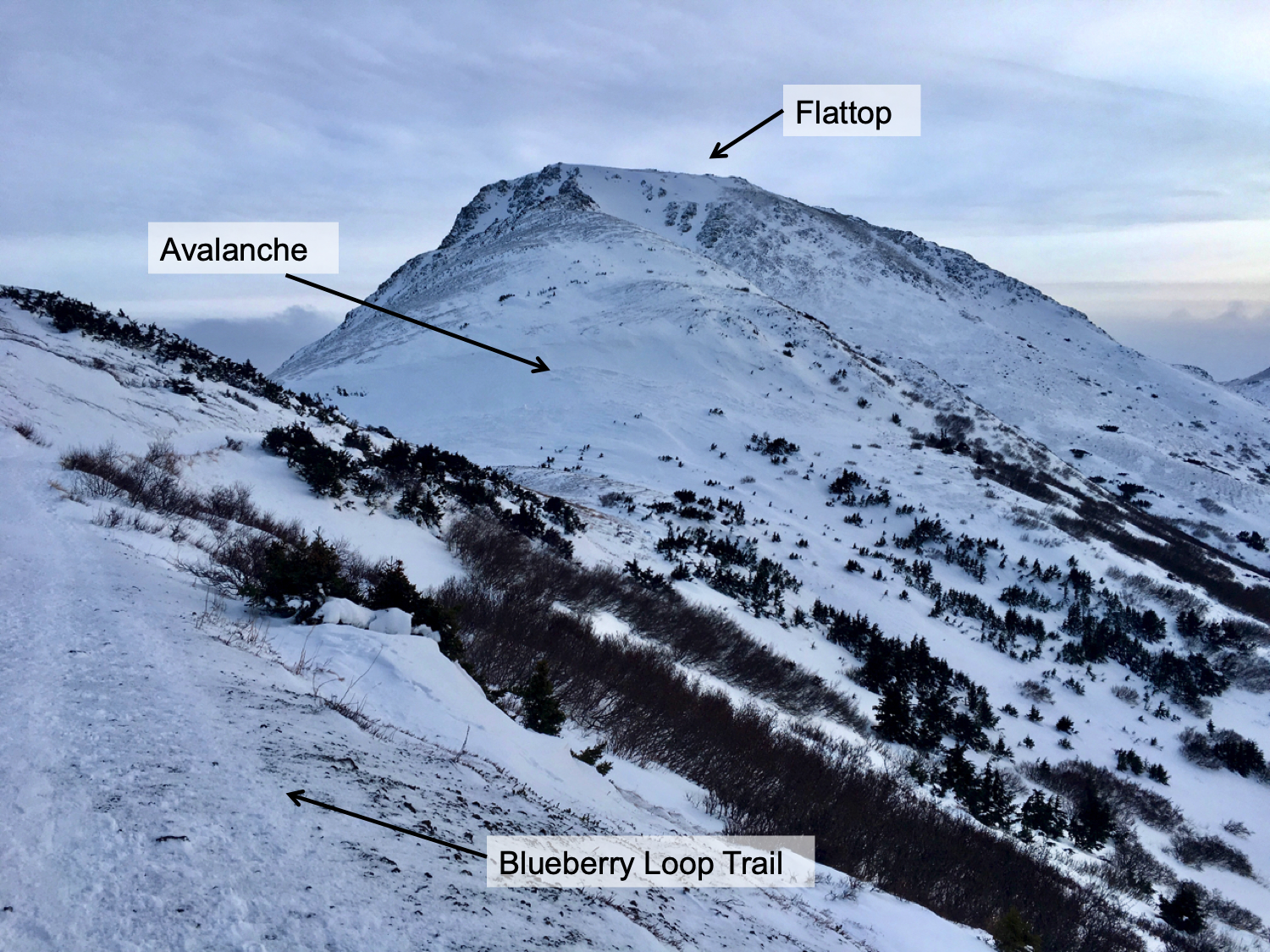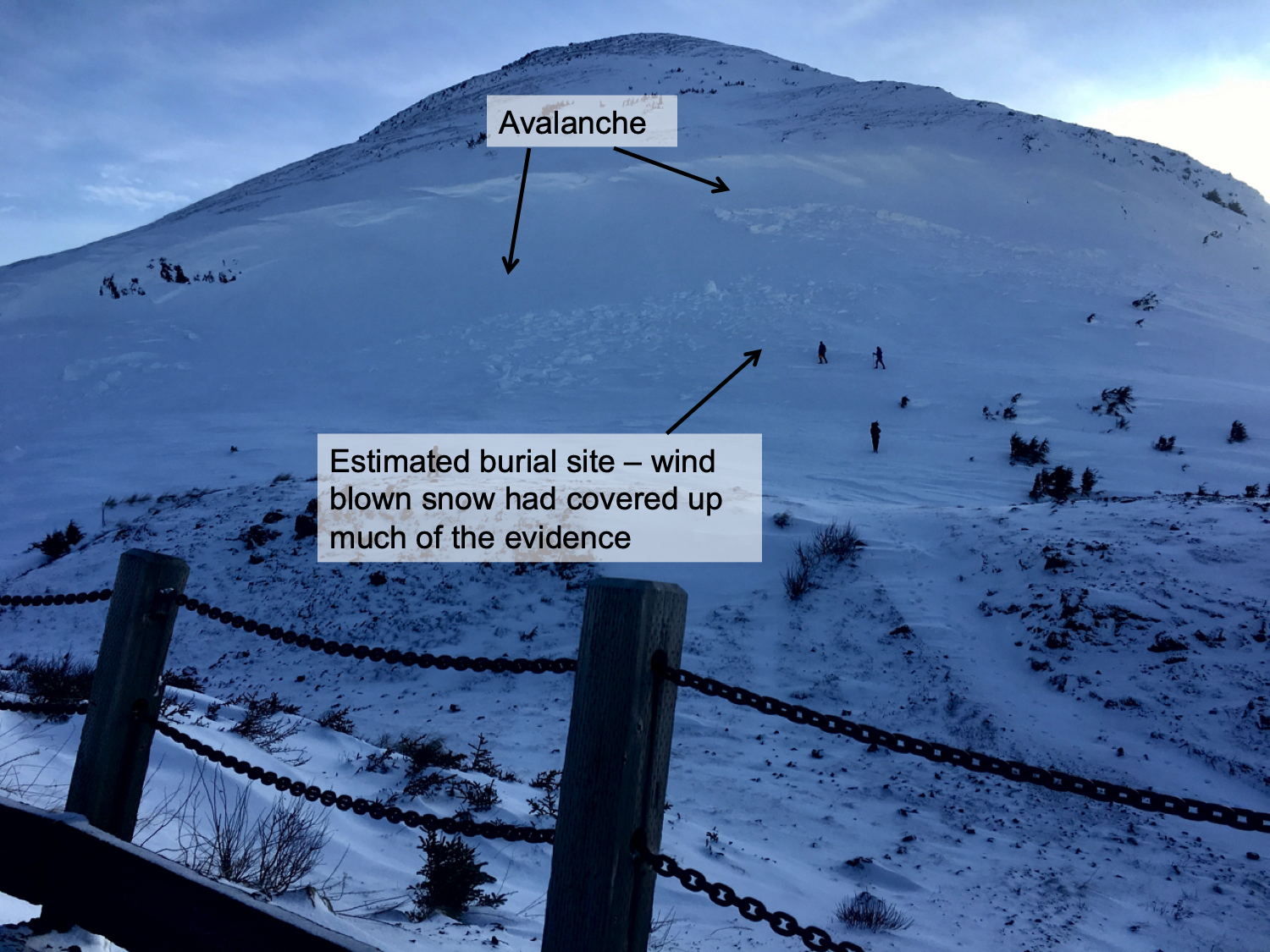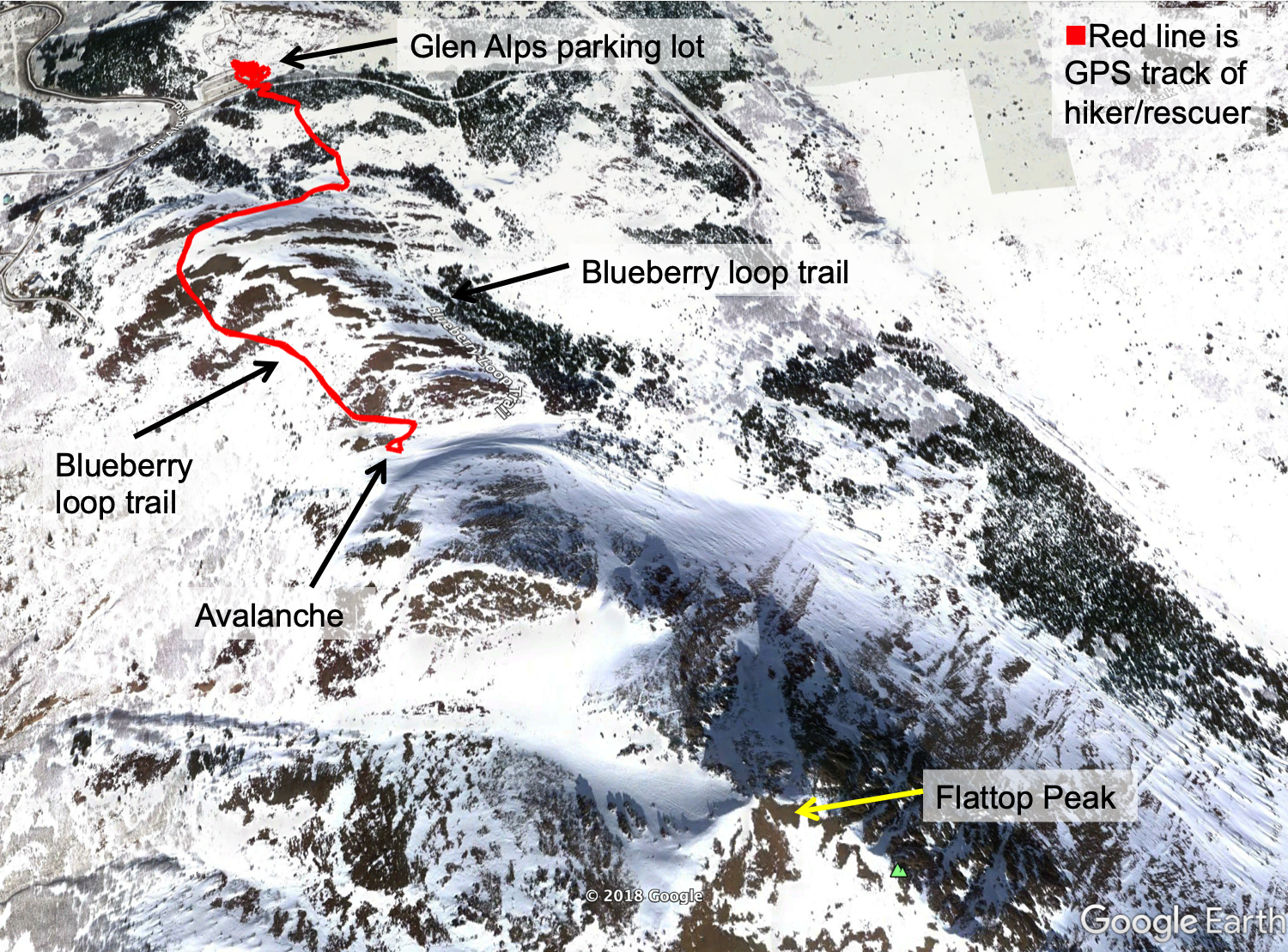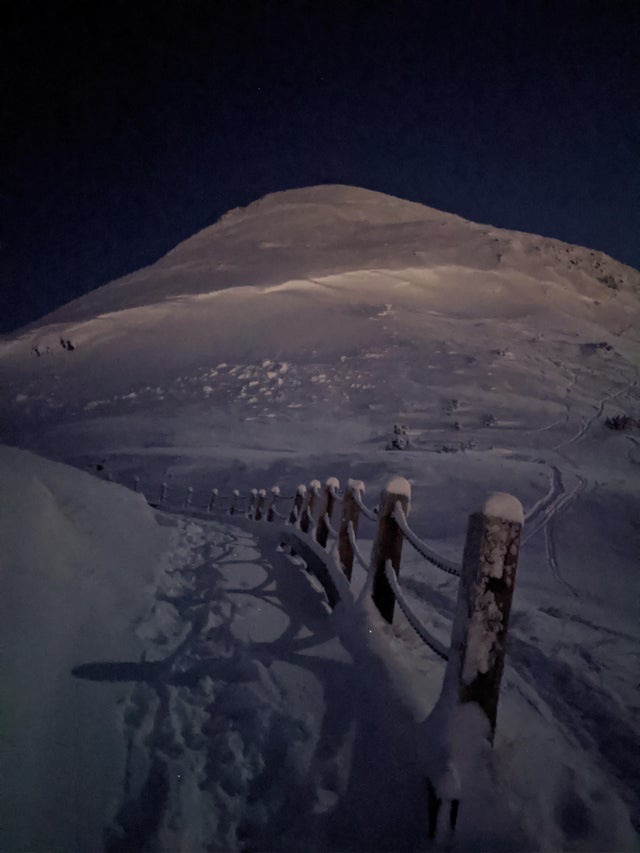Near Miss: Chugach State Park
Location: Flattop – near summer trail
Information in this report was provided by the rescuer, Chugach State Park rangers and CNFAIC staff.
Media reports:
https://www.ktuu.com/content/news/Alaska-man-who-saved-hiker-buried-in-avalanche-recounts-rescue–565947701.html
https://www.adn.com/alaska-news/anchorage/2019/12/08/hiker-rescued-from-flattop-mountain-avalanche/
EVENTS AND RESCUE:
Around 1pm on Dec 7th, a solo hiker was fully buried by an avalanche just above the summer trail that heads to Flattop Peak from Glen Alps parking lot. The avalanche was just above the trail intersection of the Blueberry loop trail and the Flattop trail (see photos). The avalanche did not cross the trail. Another solo hiker traveling along the trail roughly 1.5 hours later (~2:20pm) noticed the avalanche and two feet/legs sticking out of the debris, which were moving. The hiker rushed to the scene and dug (with his hands) the hard frozen debris and extricated the victim in an estimated 5 minutes. The victim was alive, conscious, very cold and hypothermic. The victim’s head was 2-3′ below the debris. The debris was made of large blocks that appeared to provide air pockets/space for the victim to breath. The victim’s head was downhill and face up. The hiker, now rescuer, called 911 then assisted the victim while slowly walking out to the Glen Alps parking lot. The rescuer had given the victim an extra coat to help warm him and when they arrived in the parking lot they met Anchorage Fire Department medics. The victim stated to the rescuer he had been fully buried but was able to kick his legs hard enough to free them from the snow.
Time frame – rare successful rescue after 1 hour burial: A party of three hikers returned the following day to speak to Chugach State Park rangers and confirmed they saw the avalanche and the debris at 1:17pm but did not see any evidence of a person buried underneath. This helps to confirm that the hiker was indeed buried for a minimum of 1 hour and a maximum of 1.5 hours.
We are so very grateful for this positive outcome and that the rescuer was there, observant and had the avalanche training to keep calm and effect a successful rescue.
AVALANCHE DETAILS:
Type: Hard Slab
Problem/Character: Wind Slab
Crown Thickness: 2-3 feet
Width: 300 feet
Vertical Run: 200 feet
Trigger: Foot penetration most likely*
Weak Layer: Hardness change
Aspect: NW
Elevation: 2,500 feet
Debris: 3-8 feet deep
Note: Much of the avalanche site was blown in with snow due to strong winds not only at the time of the avalanche but for the following day during our investigation. We were unable to find the burial site due to the wind blown snow covering much of the debris.
This was a hard wind slab avalanche with what appeared to be portions of cornice that also fell. It was estimated at 2-3 feet thick, 300′ wide and running 200′ down slope. Size D2. The slope was very steep near the top (~50-60 degrees) and around 30 degrees just above where the victim was buried. The weak layer is unknown but all signs point to a hardness change in the snow layering due to a significant wind loading event on December 7th, the day of the avalanche.
*It is still unknown if the hiker triggered the avalanche by walking out onto the slope or if it was a natural avalanche due to active windloading or a cornice fall while the hiker was below. The most likely case is the hiker triggered the avalanche.
WEATHER and SNOWPACK:
Intermittent snow showers and light winds during the week before the avalanche added between 4-8″ of new snow to the area. On the day before the avalanche, easterly winds recorded at the Glen Alps Near Anchorage weather station (2192′) rose to 10-20 mph with gusts in the 30’s mph as a warm storm was moving in. On the day of the slide, easterly wind increased to 30-35 mph with gusts near 50 mph. Additionally, a light rain/snow mix was falling and temperatures were warming into the mid-upper 30’s F at the avalanche site. The site is suspected to have seen stronger winds than the data from the weather station that sits ~300′ lower in elevation. These winds transported the new snow along with any additional loose older snow and built large drifts, wind slabs and cornices. Furthermore, the warming temperatures are believed to have encouraged this process by allowing the snow to bond together easier. The slide was triggered at the peak of the high winds and likely when the slope was the most unstable. The following day, severe wind effect was present and total snow depth in the area varied from no snow (scoured ground) to large hard wind drifts 6 feet or more thick.
Historical Significance: This avalanche path has slid earlier this season at least once as can be seen in a photo below from two days before the slide. The path is a common repeat offender for wind slab avalanches and cornice falls. It is in a notoriously windy area and sits on the lee side of the prevailing winds. There have been many close calls with people being caught in this path and one fatality in 2006 when a snowshoer was killed.








Photo of the slope taken two days before the avalanche. Credit: https://www.instagram.com/aholphoto/